[vc_row][vc_column][vc_column_text css=””]
If you’re a cat parent, you’ve probably seen your cat throw up once or twice. While it’s very common for cats to throw up and it’s still important to be aware of why it is happening in the first place.
Sure, your cat throwing up doesn’t call for a trip to the vet every single time, but it is still worth taking mental notes each time they do. A lot of cases of your cat throwing up are due to their diet, and we want to get down to the bottom of how you can help and how a raw food diet can benefit your friendly feline.
[/vc_column_text][/vc_column][/vc_row][vc_row][vc_column][vc_row_inner content_placement=”middle”][vc_column_inner width=”1/2″][vc_column_text css=””]
What kinds of throwing up are there?
Before we get into all the reasons for a cat throwing up, did you know that there were two different kinds of vomiting? According to Scollar, the two types of cat throw up, or vomiting, are acute and chronic.
Acute vomiting
This is considered to be a sudden episode and is not long-lasting. For the most part, this cat throw up is caused by eating too much or too fast and doesn’t pose as much of a problem.
Chronic vomiting
This is ongoing, meaning your cat is throwing up multiple times a day and will start to show other symptoms, including pain and weight loss. A trip to your holistic veterinarian is advised.[/vc_column_text][/vc_column_inner][vc_column_inner width=”1/2″][/vc_column_inner][/vc_row_inner][vc_row_inner content_placement=”middle”][vc_column_inner width=”1/2″][vc_column_text css=””]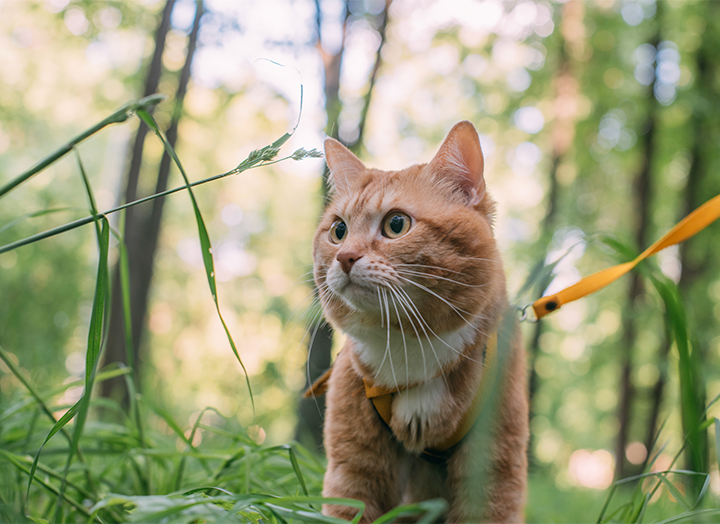
What is the difference between a cat throwing up and regurgitation?
Although these two things seem similar, there are differences that you should be aware of. According to VCA Canada, throwing up will typically involve abdominal contractions and effort while regurgitation won’t and will occur right after eating and drinking. Regurgitation is also usually associated with problems affecting the esophagus.[/vc_column_text][/vc_column_inner][vc_column_inner][vc_column_text css=””]
Reasons for a cat to throw up.
Vomiting is a very unclear symptom and could be caused by a wide variety of reasons. In fact, vomiting can be in relation to any illness your cat is facing. If we break it down, the reason for your cat throwing up could be classified under some of the following categories.
- Toxins: these pertain to certain poisonous plants and household items like lilies or antifreeze
- Drugs/Prescriptions: this could be a reaction to certain medications your cat is taking, like antibiotics
- Diet: Dietary intolerance, allergies, or a sudden change in food can induce vomiting
- Intestinal: This includes a number of things, like foreign bodies, acute inflammation, inflammatory bowel disease, cancer, or even constipation
- Organ dysfunction: Your cat throwing up could be due to conditions like liver disease, kidney disease, and pancreatitis
- Endocrine: Hyperthyroidism (an overactive thyroid gland), elevated calcium, and diabetes are known to have vomiting symptoms
- Neurologic: Various diseases like vestibular disease or encephalitis can cause vomiting
As you can see, there are many reasons why your cat might be throwing up and even more that we have not even listed out. We recommend speaking to your holistic vet to learn more about what could be causing your cat to throw up.
[/vc_column_text][/vc_column_inner][/vc_row_inner][vc_row_inner content_placement=”middle”][vc_column_inner width=”1/2″][vc_column_text css=””]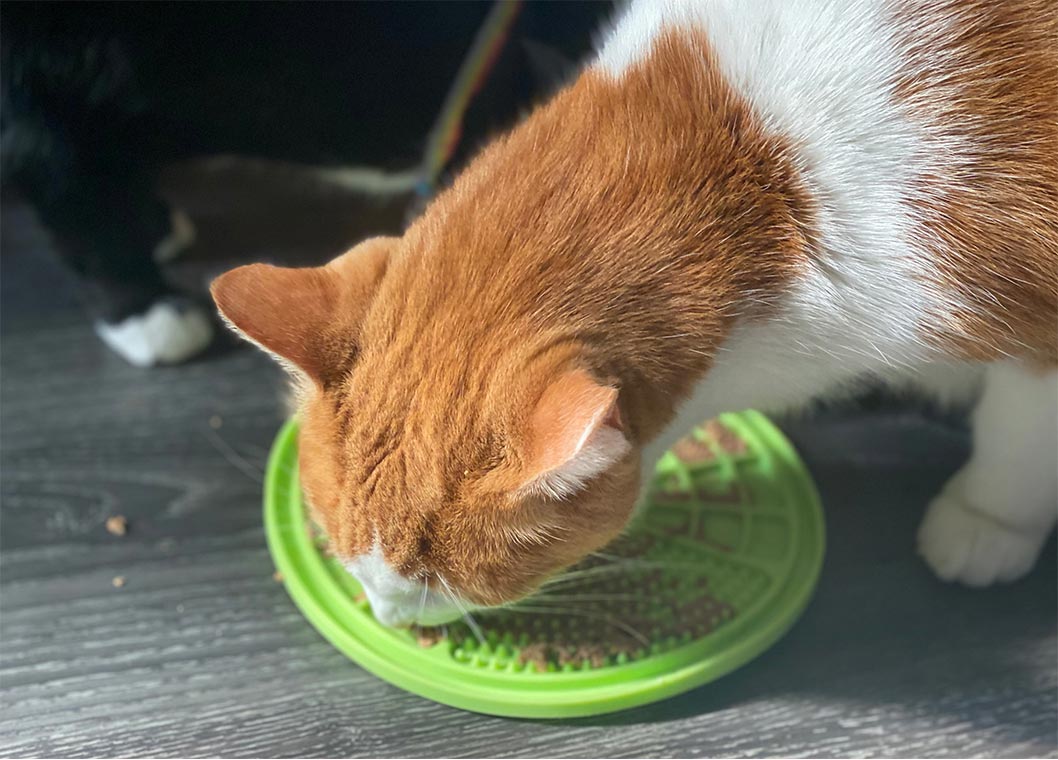
Slow down or throw up.
If you’re asking yourself “why is my cat throwing up undigested food”, well, the answer is probably in the empty food bowl on the floor.
Have you ever been extremely ravenous or excited for a meal that as soon as the plate hit the table, you scarfed it down in the blink of an eye? Sure, it’s great in the moment, but minutes later your body tells you how it really feels.
It’s no different for cats, and in many cases, your cat throwing up could be a result of eating too fast or just overeating completely. These cats tend to quickly gulp down large quantities of food before their bellies tell their brains they have had enough to eat. After that, it’s not uncommon for a bit of their meal to make a reappearance.
A solution to speed-eaters is a non-conventional feeder or bowl. These give your pet a mental “workout” at mealtime and help to slow down the rate at which they’re eating. In other cases, puzzle toys, lick mats, and even BPA-free silicone ice cube trays are all great options that encourage cats to instinctively work for their food, slowing them down and letting them actually taste their meal.[/vc_column_text][/vc_column_inner][/vc_row_inner][vc_row_inner content_placement=”middle”][vc_column_inner width=”1/2″][vc_column_text css=””]
Why does my cat throw up after eating dry food?
Believe it or not, a cat throwing up after eating also tends to be more common in those pets who are frequently eating dry food or kibble. This is because dry food needs moisture to begin the process of digestion, and without it, the food will break down at a much slower speed. Since cats have low thirst drives, they are naturally poor at hydrating themselves and will not help the digestion process much.
Furthermore, cats’ teeth were designed for ripping and tearing, not for grinding or chewing. This means that pieces of kibble often enter the stomach whole, further reducing the steps of digestion. Many commercial cat foods (both dry and canned) contain high amounts of unnecessary carbohydrates making them very difficult to digest for cats who are obligate carnivores.
Artificial flavours, colours, and preservatives are also common digestive aggravates, so it is important to always check the label of the food before dishing it out to your cat. Dry foods and kibble can contain upwards of 30 ingredients, meaning it’s very easy for your cat to be allergic to something in the mixture. Pet allergies are more common than you think, with vomiting being one of the standard symptoms.[/vc_column_text][/vc_column_inner][vc_column_inner width=”1/2″][vc_column_text css=””]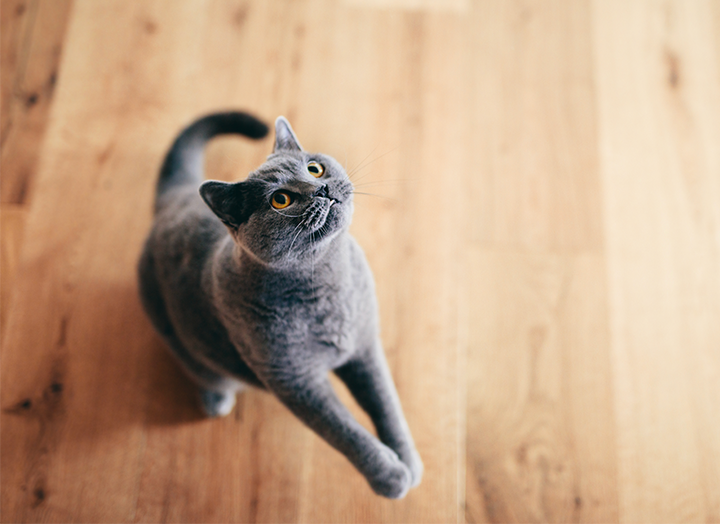
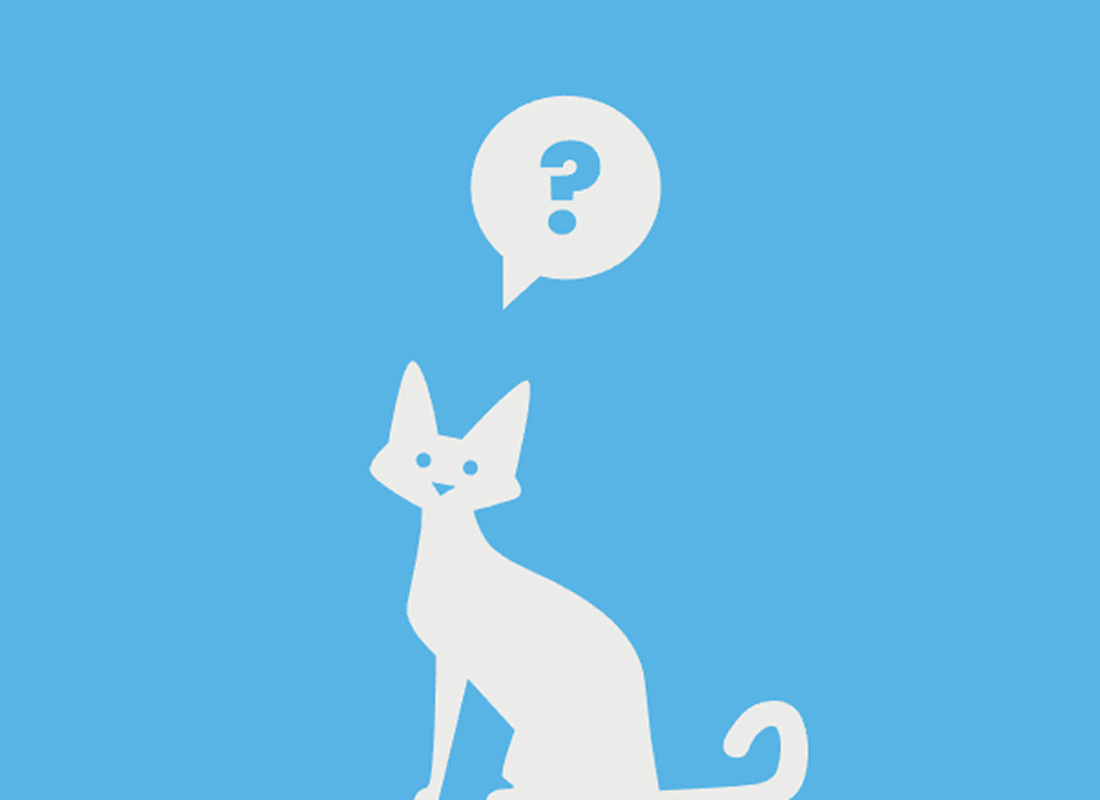
How can a raw diet help my cat that is throwing up?
Feeding cats raw food has a ton of benefits, especially for a cat that pukes after eating. Since a raw diet contains minimal ingredients, it’s a great choice for cats who may regularly be eating a meal that doesn’t agree with them. Each Bold by Nature raw food cat diet is rich in real meat, bone and organ and doesn’t include any unnecessary ingredients or fillers. As we previously stated, dry foods and kibbles can contain too many ingredients to count, and a raw diet makes it easy to track down an allergen if there is one.
Additionally, raw diets are naturally rich in moisture making them much easier to digest and are perfect for cats with low thirst drives. That’s not to say you shouldn’t keep an eye on their water intake though. Always ensure your cat has access to clean, fresh water. The probiotics and digestive enzymes found in our raw formulas also make it easier for cats to begin the process of digestion.
[/vc_column_text][/vc_column_inner][/vc_row_inner][vc_row_inner content_placement=”middle”][vc_column_inner width=”1/2″][vc_column_text css=””]
Can raw food help my cat with hyperthyroidism?
Yes! In fact, feeding a raw diet to cats with hyperthyroidism is extremely beneficial to their health. Since cats who suffer from hyperthyroidism experience weight loss and vomiting, the additional protein can help maintain a restorative weight and provide overall health benefits.[/vc_column_text][/vc_column_inner][vc_column_inner width=”1/2″][vc_column_text css=””]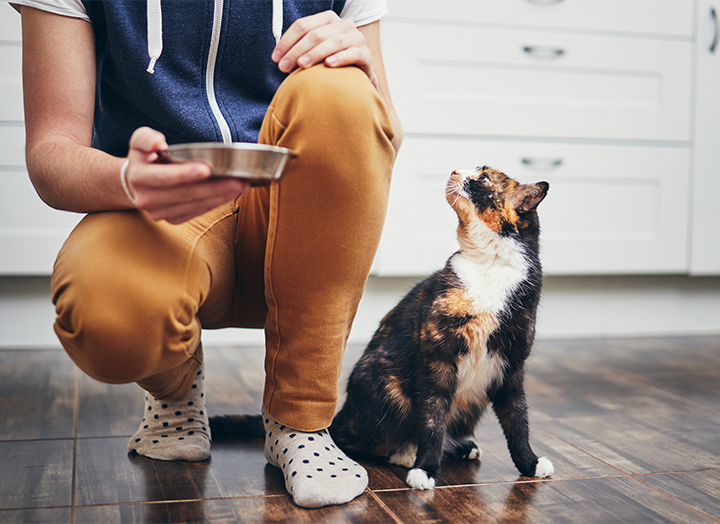
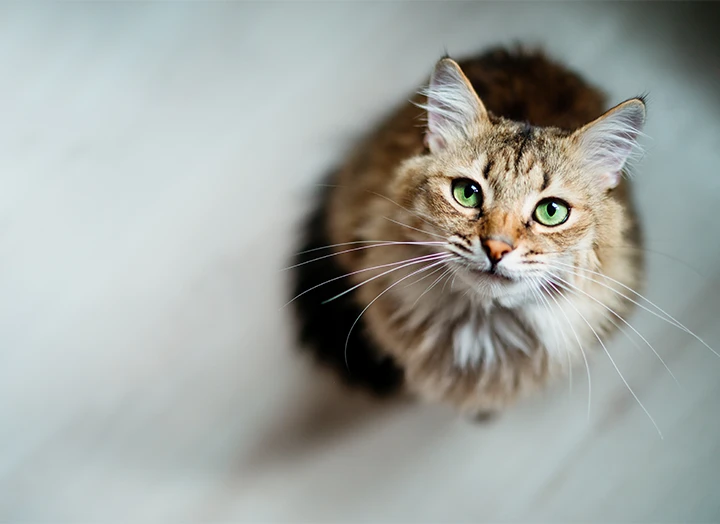
What is the best way to switch my cat’s food?
If you want to transition to raw food, the best way to do it is by going cold turkey – literally. Our Bold by Nature Turkey for cats is a great way to start your feline on its raw adventure as it’s an easier protein to digest. Get started by combining a protein like turkey with smaller, more frequent meals throughout the day to allow your cat to adjust to it easier.[/vc_column_text][/vc_column_inner][/vc_row_inner][vc_column_text css=””]
Where can I get Bold by Nature products?
You can purchase Bold by Nature products at your local retailer or online. If you’re unsure where to buy raw pet food, you can use our location finder to explore retailers near you that carry Bold by Nature products, like raw pet food, supplements, and more.
[/vc_column_text][/vc_column][/vc_row]













